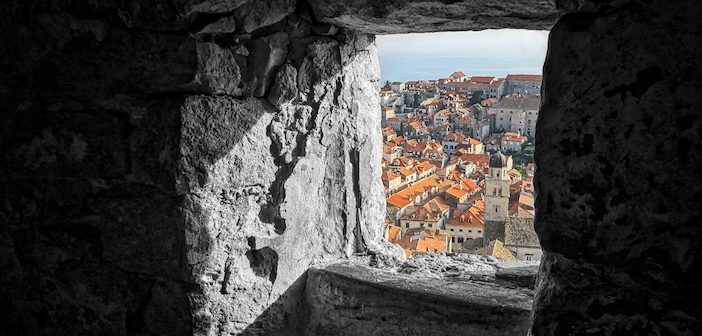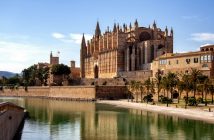The crowds in Dubrovnik Old Town are massive, writes Nick Harman, but it’s still a magical place to visit for a short break…
‘Shame! Shame!’ No, not on me for never having watched a single episode of Game of Thrones, but the cries of the crowds around the Jesuit Staircase where Cersei Lannister took the infamous Walk of Shame. Okay, admittedly, I did watch that bit on YouTube, but purely for the purposes of this article. Ahem.
Dubrovnik Old Town was used a lot for locations in GoT. It played King’s Landing, capital of the fantasy world of Westeros, and it’s easy to see why. It’s one of the world’s most perfectly preserved mediaeval cities and it only takes half closed eyes to see it pretty much as it was back then.
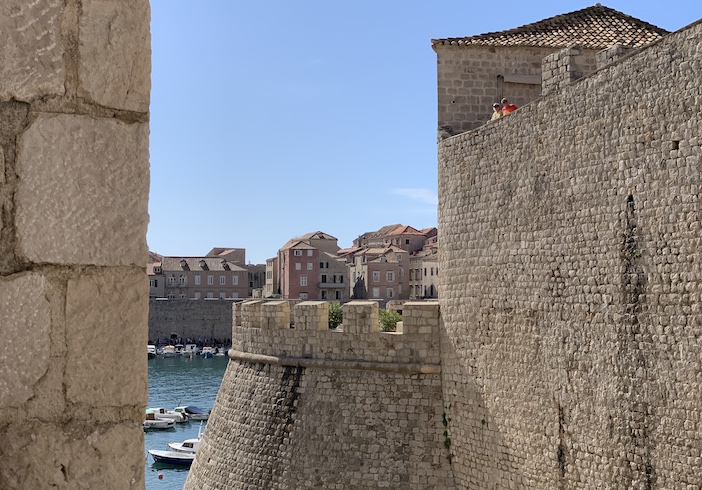
It was completed in the 16th century, the massive stone walls making sure that an attack from the Adriatic would be a challenge for any aggressor. It even survived modern shelling in 1991 during the Croatian War of Independence, but repair and restoration works have put it all back together very well. An unusual tourist map on a city wall guides you to where shells landed and grades how badly they damaged buildings – and you can still see the shrapnel pockmarks.
It’s hard to know how it’s going to survive the tourists, though. On average there are 27.42 tourists for each inhabitant on any given day, and most of them seem to come from the mega cruise ships.
Getting caught in this maelstrom of lurid synthetic clothing, and considering myself, as we all do, not a tourist but a traveller, I decided to come back nice and early the next day. There is no charge to enter and re-enter the city, which seems a financial oversight that would cut the crowds – and make the city some money, too.
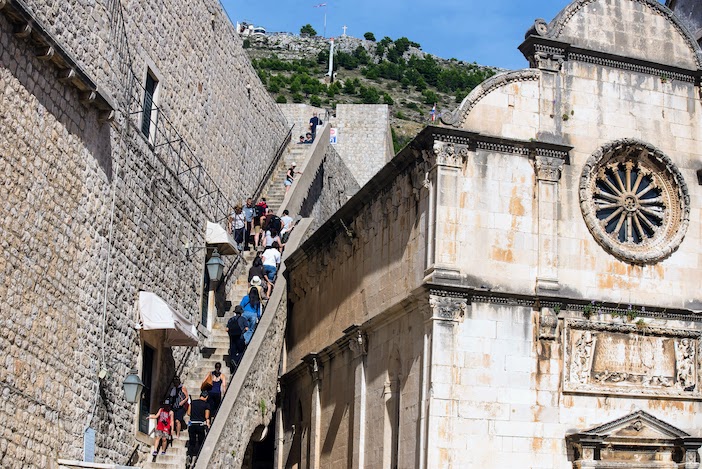
There is, however, a charge to go up onto the city walls and walk the circumference. With the sun already hot, even in October, I peered up at the near ladder-like ascent, and then down at the cost (€30) – and decided it was not for me. Being carried off to A&E with a stroke did not seem a good way to end a city break, or the best way to spend €30, although the view was clearly going to be fantastic.
Besides, the wonderful buildings in the city are more than enough to look at; the baroque St. Blaise Church, the Renaissance Sponza Palace and Gothic Rector’s Palace for starters. The paving is all limestone, a building material found in great abundance in the area, but the passage of sandals over time, followed by modern trainers, has worn it so smooth it looks more like glossy marble. Which makes it a little slippery if someone drops a gelato. I skidded across one little lane and only frantic arm-windmilling prevented me from becoming a casualty.
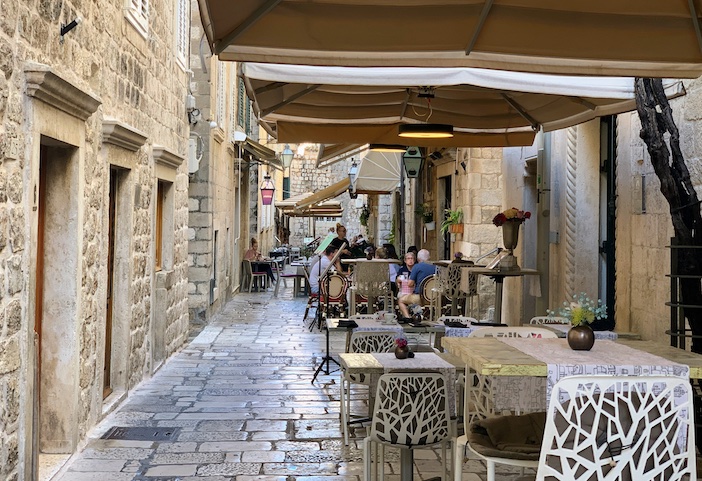
The lanes are very Venetian in look and feel; narrow with high buildings and given over to touristy shops of every kind. I avoided those, but I did love the Duck Shop where, for reasons that defy logic, all they sell is semi-identical plastic duck characters in psychedelically bright colours; rows and rows of them so strobe-like that I thought I was having a flashback. I bought myself one, of course, pleased to see that it was actually made in Croatia.
The main drag is the Stradun (or Placa). This dead straight avenue was once a murky canal that separated the City into two halves, but which was filled with sand and topped off to make a grand avenue sometime in the 13th Century. It runs from the Pile Gate (Vrata od Pila) to the Ploče Gate (Vrata od Ploča). Without the crowds, it’s a fairly quick walk, but a rather boring one if you don’t want to look at handbags and ties – the necktie, incidentally, was invented in Croatia, hence ‘cravat’.
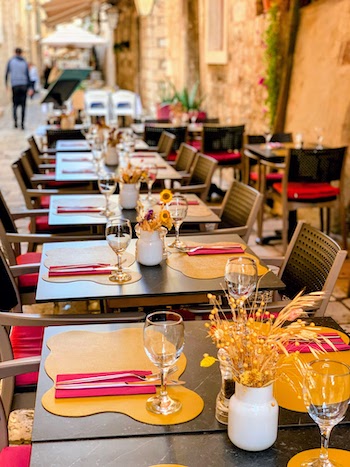 A better option is to take the first gap on the left and clamber up the stone steps to the first of the many parallel alleys that are filled with enticing bars and restaurants. It can be hard negotiating the tables and chairs that are in the way, the restaurants all have rather dark interiors due to only having windows at the front, but it’s far better up here. Many tourists avoid the climb, which helps keep their numbers down.
A better option is to take the first gap on the left and clamber up the stone steps to the first of the many parallel alleys that are filled with enticing bars and restaurants. It can be hard negotiating the tables and chairs that are in the way, the restaurants all have rather dark interiors due to only having windows at the front, but it’s far better up here. Many tourists avoid the climb, which helps keep their numbers down.
I was being guided by Dubrovnik On A Plate, who do food tours here. It certainly makes discovering Croatian food and wine easier, and most dishes you try you won’t find in your hotel. In Restaurant Moskar we ate Komiška pogača – stuffed bread with salted anchovies and caramelised onions, and traditional Pašticada, a stewed beef dish with homemade potato gnocchi – one of the many culinary influences from nearby Italy. It all went down well with a white wine, Žlahtina, from the island of Krk and a red Plavac Mali from the Pelješac peninsula.
In the second stop, Restaurant Tavulin it was a charcuterie board; Dalmatian prosciutto (cut far thicker than the Italian version), cheeses from the island of Pag, an octopus salad, tapenade of black olives, tuna pate and superb anchovies marinated in vinegar and lemon.
For a last savoury, we headed to Restaurant Kopun, at the top of that Jesuit Staircase, for two dishes with capon meat paired with the ancient white wine, Malvasija, made with grapes grown in the Konavle valley, 30 minutes from the city. One dish was made with wild bitter oranges, raisins, apricots and honey, from a 16th century cookbook, and the other was made with dried plums, forest fruits and porcini mushrooms.
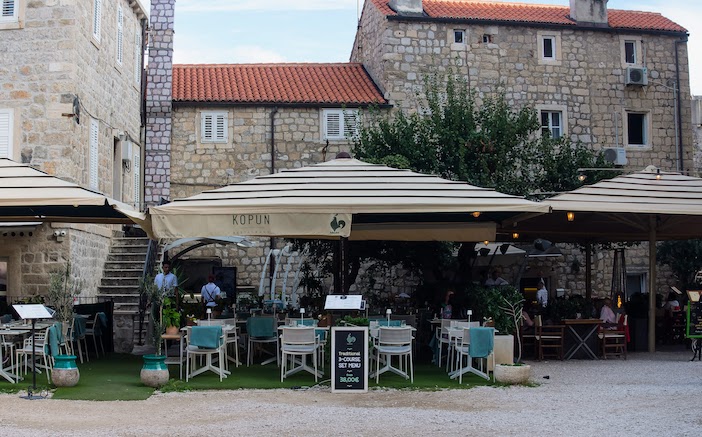
Both were served with barley, the crudest of grains. These dishes really did showcase how Croatia, whilst having one foot in the Mediterranean, climate-wise, is also a culinary neighbour to less Latin countries – Slovenia to the northwest, Hungary to the northeast, Serbia to the east, Bosnia-Herzegovina and Montenegro to the southeast.
Finally, after three hours of eating and absorbing excellent information about the city and its history, we headed into Patisserie Gianni for a selection of cakes washed down with the Croatian sweet dessert wine, Prošek. Lovely, too. Food tours are just one of the many tours on offer, others include art and history, but the most popular are, of course, the Game of Thrones tours. But make sure you take a licensed one, I noticed that ‘King’s Landing’ has more than a few villains lurking about ready to entrap the unwary.
Shame on them.
Nick stayed at Valamar Lacroma, a verdant modern hotel overlooking the Adriatic and a twenty minute bus ride from the old City.
Photos by the author. Header photo by Mike Swigunski, courtesy of Unsplash

